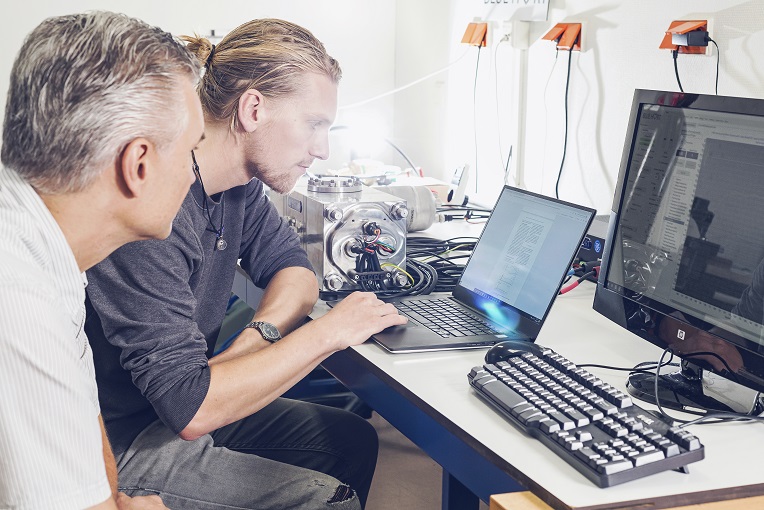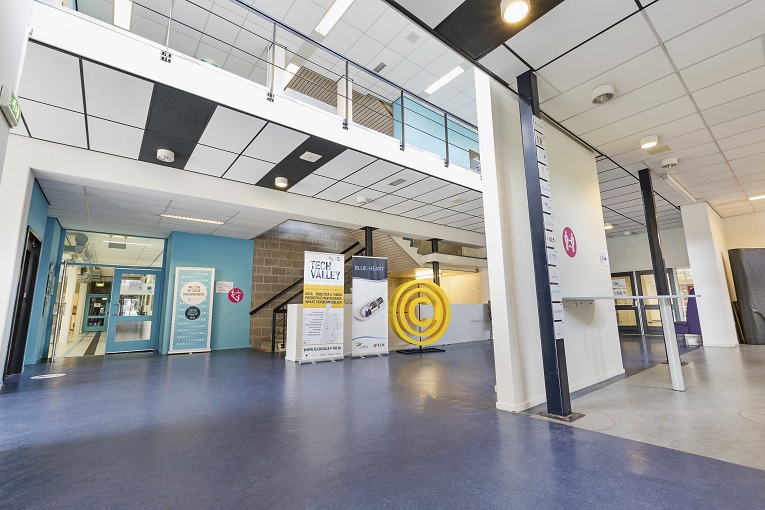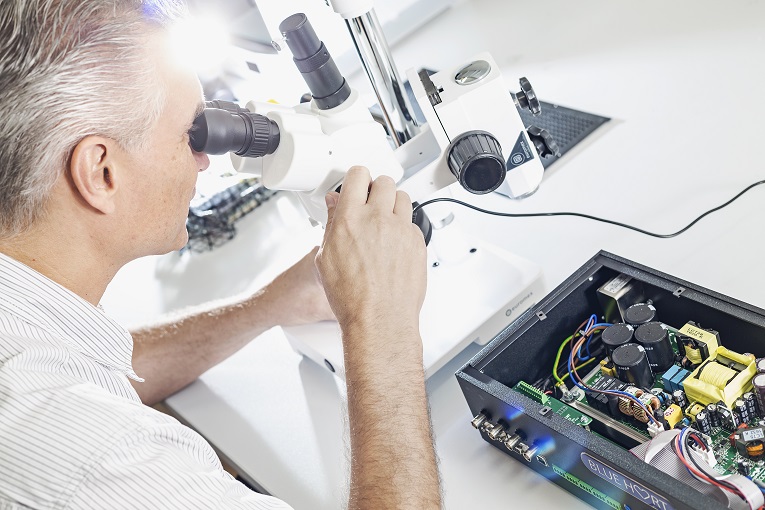


It is estimated that when a gas boiler is replaced by an electric heat pump, annual emissions are reduced by 2.5 tonnes of CO2e. A Netherlands-based company is developing a thermoacoustic heat pump for even more sustainable heating and cooling.
Blue Heart Energy has built a heat pump that leverages thermoacoustic technology to produce heat and cold. The result is a device with superior performance, reduced cost and without refrigerants.
Thermoacoustic is the interaction between temperature, density and pressure variations of acoustic waves. It combines several fields within physics, so it is a topic often used by university professors as an instrument for teaching their students. It is perhaps for this reason that there is substantial research on the subject.
However, when it comes to the practical applications of thermoacoustics, the situation is radically different. The principles of thermoacoustic are currently applied in cryocooling, a method which cools to very low temperatures. However, the actual use of thermoacoustics as a technique to generate electricity or heat is still at an early stage. This is about to change with the development of Blue Heart Energy’s thermoacoustic heat pump.
Potential applications Back in 2016, Michiel Hartman, a civil engineer from the Delft University in The Netherlands and founder of the successful e-bike company QWIC, learned about the R&D advancements that TNO Energy Transition (TNO), a leading research organisation in the country, had achieved over the last 15 years in the thermoacoustic field as well as its potential applications within the heating industry.
Knowing that more than 80% of the heating systems in the EU were fossil-fuel based and that a growing environmental conscience was taking root in society, Hartman foresaw the need for the electrification of the market and understood the opportunity that the application of thermoacoustic technology to the residential heating market would represent. That same year, Blue Heart Energy was incorporated in Alkmaar in The Netherlands, with Hartman as CEO and main shareholder with a minority stake going to TNO.
It is estimated that every time a gas boiler is replaced by an electric heat pump, yearly emissions are reduced by 2.5 tonnes of CO2e. With this information in mind, the underlying purpose of Blue Heart Energy became to accelerate the adoption of heat pumps in the market. The new technology was intended to significantly improve the performance of existing heat pumps and, as a consequence, reduce its entry barriers in the market.
With the aim of achieving faster penetration, it was decided to focus on becoming the engine of reference for every heat pump in the market, rather than build an entirely new heat pump. Blue Heart Energy’s idea was to replace the cold circuit of compression heat pumps. With this approach, the technology will be available for existing manufacturers and installers in the market, and it will also leverage their already established distribution channels and speed up the energy transition.
How it works Blue Heart’s device consists of a linear engine and a tubular circuit with a specific shape. This circuit is called the loop, and it is filled with helium, an inert gas without any global warming potential. The driver generates sound waves, which are pressure oscillations. These waves travel along the circuit and cause the gas to expand and compress at two very specific locations, where heat exchangers have been placed.
During expansion, the gas can acquire heat from the environment at one heat exchanger. The acoustic wave compresses and moves the gas towards the other heat exchanger. Due to the compression, the gas increases its temperature, allowing it to provide heat to the house.
Despite using sound waves, the technology is completely silent, solving a recurring concern of many current heat pump owners. More importantly, the system is highly flexible, as it can efficiently work with every temperature source and deliver the necessary temperature output, regardless of how big or small the requested temperature rise.
The consequences of this feature are twofold. On the one hand it will allow standardisation of the design and installation of heat pumps, which is expected to enable a significant cost reduction for both original equipment manufacturers (OEMs) and installers. On the other, the system can meet all the necessary heating requirements of a house, including the delivery of the high temperatures needed for hot tap water and for the radiators in existing houses that are generally not as well insulated as new houses and therefore need to operate at higher temperatures.
According to a Capgemini report (Fit for Net-Zero) 75% of EU buildings in 2050 are buildings that already exist. Therefore, to decarbonise the heating industry, it is key to have a solution for existing houses.
No refrigerants Another important advantage is the fact that no refrigerants are required. By embracing such a technology, OEMs won’t be dependent on the regulations and quota schemes that limit the amount of refrigerant that they can place in the market (inside their own products). These regulations keep on changing and, in many cases, limit OEMs’ ability to take long term decisions. Finally, along with its performance, the architecture of the system is very simple, reducing its maintenance requirements and extending its lifetime.
Blue Heart Energy already has a prototype which is being tested by its launch customers. In addition, it is working closely with heat pump manufacturers and installers to ensure that its market product, which will be finalised by the end of 2022, meets all the necessary requirements to meet the unfulfilled demand needs and to ensure a seamless integration with the existing solutions in the market.
The future Blue Heart Energy has 15 employees as well as an ongoing exclusive agreement with TNO to keep on leveraging its expertise and R&D facilities. It also relies on an array of leading players in the production of each of the elements that need to be combined to engineer the complete product, with its assembly to be outsourced.
While the initial focus is to provide heating, the company’s strategy also includes the development of an affordable air conditioning system that doesn’t require any refrigerants harmful for the environment. According to Project Drawdown, a resource for information and insight about climate solutions, the reduction of the emissions generated by refrigerants is among the most impactful measures that can be taken in the fight against global warming. Blue Heart Energy recently secured a funding round from a private investor and has attracted the interest of a range of cleantech funds and investors, which will be needed to bring the product to mass production.






